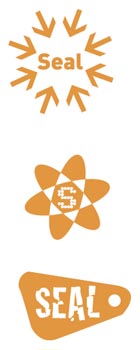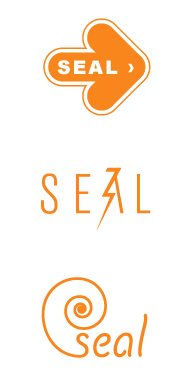Uh oh, here we go again.
Recently, the United Nations launched a contest to solicit a logo design for its “2006, the International Year of Deserts and Desertification (IYDD)” campaign. The winner would receive $5,000 US. The contest rules and regulations were sent to colleges and design programs across the country, positioning itself as an opportunity for students to create an international logo for one of the world’s most well-known humanitarian organization.
Sniff..sniff…do I smell the foul odor of spec work here? Is there something wrong with this picture, or is it just me?
First, a brief excerpt from the press release:
…
The IYDD
On the 23rd December 2003, at its Fifty Eighth Session, the United Nations General Assembly declared 2006, the International Year of Deserts and Desertification (IYDD). The General Assembly justified this resolution as a means to prevent the exacerbation of desertification and invited governments and other partners to support the successful celebration of this year and to raise public awareness of the issue in order to protect the biological diversity as well as the indigenous and local communities and the traditional knowledge of those affected by this phenomenon.
The LOGO
This important year in the UN calendar calls for a unique logo to advertise our collective mission as a UN system and the goals we wish to achieve for the promotion of sustainable development in arid ecosystems and the protection of future generations. Within that perspective, we have decided to open the design of our logo to the public, in order to benefit from the largest spectrum of creativity and sensibility to the issue. The ideal design contemplated should be both simple in its overall conception yet creative in conveying the IYDD image and capturing the public’s attention. In that context, it should firstly succeed in communicating the goals of the International Year of Deserts and Desertification. It should also endeavour to suggest the concept of UN partnership and convey the principles of the United Nations Convention to Combat Desertification (UNCCD) as a tool for poverty eradication. This competition will be open to all participants being individual or corporate. Staff and Families of the United Nations interagency cluster will not be eligible.
Background
Desertification is a worldwide problem directly affecting one third of the planet’s land surface. Desertification is the degradation of land in arid, semi-arid, and dry sub-humid areas. It is caused primarily by human activities and climatic variations. It does not refer to the expansion of existing deserts. Poverty, political instability, deforestation, overgrazing, and bad irrigation practices can all undermine the land’s productivity. Over 250 million people are directly affected by desertification. In addition, some one billion people in over one hundred countries are at risk. These people include many of the world’s poorest, most marginalized, and politically weak citizens. Combating desertification is essential to ensuring the long-term productivity of inhabited drylands.
…
So let’s look at this opportunity. Clearly, the cause is legit and deserving of attention. For a design student, the opportunity to design a UN logo is difficult to resist — especially since the winner also receives $5,000 US, which is a fortune for most students.
But on the other hand, why is the UN targetting this contest to students? Is it because they realize that professionals would immediately decline the work, deeming it unethical? Is the UN being opportunistic in its method — trying to solicit as much design work from students as possible for just a measly $5 grand. The submissions they receive will be worth a thousand times that much in labor and effort.
This is starting to sound a lot like the Vancouver Olympic Committee’s (VANOC) contest to design the logo for the 2010 Winter Olympics in Vancouver. That contest had a prize of $25,000 CN and was open to all Canadians. But the Society of Graphic Designers of Canada (GDC) called it a sham, and first forbid any of its members to participate, but then backed off and settled for an official protest of the unethical practice by VANOC. We covered it briefly on Speak Up, but you can read about the incident and the response on the GDC website here, here, and here.
But to be fair, the Vancouver Olympic Committee was a for-profit organization, while the UN is clearly non-profit. Should that make a difference?
So bottom line — is this particular instance an opportunity or a scam? Is the practice unethical, or is it a fair and reasonable way for students to bid on a high-profile project that they would never have access to otherwise? Should the professional design community be involved and reply, or just ignore it?
+ Thanks to Robynne Raye for the topic and info.











Tan, I think this issue can go both ways. On one side - as you said - UN is a non-profit organization and for them to reach out to students for a logo I wouldn't consider it unethical. UN will use the logo to promote an idea and call for action for the betterment of the world in general. In other words they [UN] won't make any profit of the logo.
Say if the case was that a for-profit company solicited students for logo design for $5000 I would consider that highly unethical, because they won't only exploit students but they will deprive experienced designers from doing the job.
...I guess in case of UN I would give them the green light and say that it's ok for them to reach out to students. 5Gs doesn't sound that bad after all.
On Mar.02.2005 at 06:10 PM